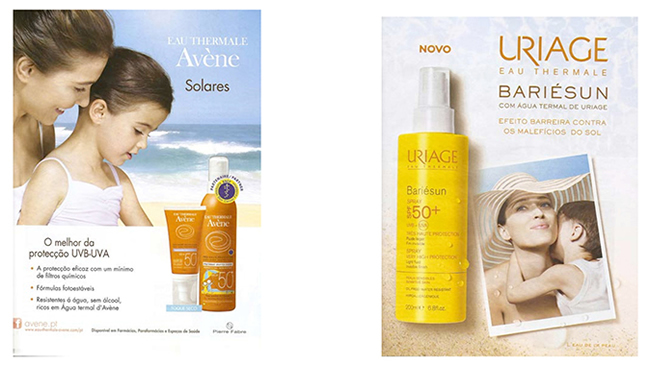
10.15198/seeci.2016.39.46-71
RESEARCH
THE “FOREVER YOUNG” CANON. FIGURATIONS OF THE ADVERTISING OF FEMININITY
THE «FOREVER YOUNG» CANON. FIGURAÇÕES PUBLICITÁRIAS DA FEMINILIDADE
Eduardo-JM Camilo1 Assistant Professor in Communication Sciences at the University of Beira Interior; Teaching Research in Labcom-IFP, University of Beira Interior, Portugal.
1Universidade da Beira Interior. Portugal
ABSTRACT
In contemporary advertising discourse, the importance of branding prevails over the product. This is one of several consequences increasingly exploiting the applicant of the intangibles in detriment of those who took as the foundation of USP. To paraphrase Jean Marie Floch, the promotional sheets relates increasingly with oblique paradigms advertising and especially the mythical advertising, whose references as Ph Michel or mainly Leo Bernett Michel and Jacques Séguéla were inevitable (Floch, 1990, pp. 201-204; Camilo, 2010, pp. 123-130). Precisely with reference to this discursive context, it is our purpose to show how the actor advertising is calculated, especially that starring role of “young” and “woman”.
This work aims to carry out a classification of regimes of the representation of advertising of the “young woman” and is derived from a semiotic analysis of nature texts. It is based on a corpus of 230 by means of advertising published in women’s magazines published in Portugal in the period of May and July 2015. We intend with this qualitative analysis to draw a semiotic profile of “female actor” and see how far this is excessive determined by an attribute: the “youth”.
KEYWORDS: Advertising, semiotics, textual analysis, análise textual, figurativization, thematization female figuartions, age figurations
RESUMO
No discurso publicitário contemporâneo, a significação da marca prevalece sobre a do produto. Esta é uma das várias consequências da exploração cada vez mais recorrente dos valores intangíveis em detrimento dos que se assumiam como o fundamento das USP. Parafraseando Jean Marie Floch, o registo promocional incide cada vez mais nos paradigmas da publicidade oblíqua e, principalmente, da publicidade mítica, relativamente aos quais referências como Ph Michel ou, principalmente, Leo Bernett e Jacques Séguela foram incontornáveis (Floch, 1990, pp. 201-204; Camilo, 2010, pp. 123-130). Justamente, tendo por referência este contexto discursivo, é nosso propósito descortinar de que modo é figurado o actor de publicidade, principalmente o que protagoniza os papéis de «jovem» e de «mulher».
Este trabalho visa proceder a uma classificação dos regimes de representação publicitária da «mulher jovem» e decorre de uma análise semiótica de índole textual. Fundamenta-se num corpus composto 230 por anúncios publicados em revistas femininas editadas em Portugal no período decorrente ente Maio e Julho de 2015. Pretendemos com esta análise qualitativa traçar um ‘perfil semiótico’ do actor feminino e verificar até que ponto este se encontra sobre-determinado por um atributo: o da «juventude».
PALAVRAS-CHAVE: Publicidade, semiótica, análise textual, figurativização tematização, figurações, femininas, figurações etária
Recibido: 08/09/2015
Aceptado: 10/12/2015
Correspondence: Eduardo J. M. Camilo1 - Professor agregado em Ciências da Comunicação pela Universidade da Beira Interior; Docente investigador no Labcom-IFP, da Universidade da Beira Interior, Portugal.
eduardocami@gmail.com
1. INTRODUCTION
The study proposes to enter into the research about the representation of women and stereotyped images of femininity. On the subject of femininity that we have relied on several studies as patents in Erving Goffamn (1977), Silvana Mota-Ribeiro (2005), Justine Marillonnet (2014) or site Images of women in advertising. With regard to female figuration, specifically the female body, we turn to Desmond Morris (2007). On the average between messages transmitted and expectations of the importance of hearing, we support him in Patrick Charadeau (1983), Eliseo Verón (1985) and Andrea Semprini (1992; 1996).
The evaluation of advertising figuration of “young woman” through a semiotic analysis of syncretic text found grounded in epistemology introduced in the field of textual semiotics. There were several references explored: Algirdas Greimas and Courtes Philipe (1993), Algirdas Greimas (1976; 1989) and Diana Persona Luz de Barros (2004). In a more descriptive angle of analysis and applied, we used such Semprini Andrea (1992; 1996) and, especially, Jean Marie Floch (1990; 1995). We also highlight studies Team William Leiss (William Leiss, Sut Jahlly and Stephen Kline, 1988) for this job, as they are an important contribution to the contextualization of the representation of women in a critical frame of advertising discourse: that of “people”.
2. OBJECTIVES
As part of this research it aims to examine the following hypotheses:
1st) the “young” is a redundant and consistent figure in advertising, either by virtue of the senses generated in various categories of brands and products, whether they are specific to some particular;
2nd) despite the way of consistency and redundancy, you can always find variations that are underlying the following dichotomy: “young woman” versus “rejuvenated woman” (Young Woman);
3rd) there can be be heterogeneity in female figuration associated with the fact that the advertising discourse articulated differently in three configurative frames of advertising sense: the advertising related with the “people”, the “product” and “scenarios of well-being;
4th) The advertising figuration of changes of young women, but also proposes the renewal of stereotypes or “female” or “youth” in reference to reading contracts established and managed among advertisers, magazines, audiences and public. These contracts contribute to the feeling transmitted they cannot be considered purely logotechnical, unilateral.
2.1. Figuration advertising: epistemological Background and methodology
A semiotic perspective of textual inspiration, the figure along with the theme corresponds to that element of generative meaning of course that materializes which means that to the stage of the discursive structures, they were still just virtual (see the scheme of Greimas and Courtes, 1993: 160).
It is undeniable the importance of the figure in the generative processes of meaning. First, along with the theme, it is constituted as a semiotic unit in which are installed in the determinations of the socio-historical and ideological speeches that take the form of theme (Barros, 2004: 12). Secondly, as already mentioned, the figure is also an important semantic unit in emerging senses materialize while other structural plans via sense generative (advertising). Third, it should be noted that it is within the figures presented with pragmatic purposes and sense that they are essentially of the “reality” of the “likelihood” of “pleasure” and “creativity aesthetics”. Finally, there is the particularity of the distinction between subject and figure based on the dichotomy between” subject “(subject) and” representation “(staging). In terms of advertising, this issue will report everything to a product or a brand.
Apart from this strictly semiotic framework, we consider important to another that allows us to measure how figuration “Young women also derives from certain forms of advertising communication that are adjacent to the step of generating frames of common sense”. In this context, we follow closely the thesis of William Leiss et al (Leiss, Jahlly and Kleine 1988: 189-214).
Within a conceptualization of advertising formats, the authors propose three frames of advertising sense: products / objects, people and the welfare of scenarios.
In products / objects, it is noteworthy that the uniqueness of advertising as a genre is based on textual search. Advertising is not free importance or brands (Georges Péninou 1976: 95-106; Naomi Klein, 2002). In turn, the framework of welfare scenarios is an organization of a spatiallity that decides a kind of drama of advertising: originally of the factory and a trading post, to the shop, the super and hypermarkets and more contemporary, to the exotic forests of the Amazon or the steppes of Siberia (for example). Finally, the third category of advertising frame corresponds to the subject conceived as actors starring roles over-determined by thematic / values about the microeconomic nature. These are the protagonists openly that “the papers of advertising”: the presenters (in which mannequins / models are integrated), demonstrators, witnesses / consumers, prescribers. They should be seen as the personification of advertising of a commercial cultivation, production and consumption. Here also no reports about the roles of advertising, reflecting the performance of other ideological structures that no longer have a microeconomic basis: models, celebrities, actors playing roles that aim to contextualize the commercial proposals of symbolic universes responsible for the transformation of products / trade names of brands.
It is from this last frame of the meaning of publicity this reflection was focused. To what extent the casting object of advertising focuses on a figuration whose themes often inform to femininity and youth? And how they these categories were discovered in the advertising copy published in women’s magazines in Portugal in the summer of 2015?
This assay is characterized by textual analysis of a corpus made up of a representative sample of women’s magazines published in the period between May and July 2015. We chose this period because it is what precedes and follows the beginning of summer, comprising various promotional campaigns which accounted for more of the female body. There were seven selected journals that we considering they covered the most varied types of audiences in Portugal: Lux Woman, Cosmopolitan, Max, Vogue, Cristina, Active and Elle. The corpus of analysis included 230 ads systematized into nine categories: electrical appliances (e.g. computers or depilators), public services (bags or mattresses), accessories (glasses or watches and in general, all reports about clothing and footwear) , cosmetics (perfume or makeup products), therapy (regenerative repair / anti-aging or anti-cellulitis), food, hygiene (including personal hygiene), companies (clinical nutrition and weight loss in the spas), and social advertising (social causes, such as ads about fighting cervical cancer).
3. DISCUSSIONS
This section is articulated in four sub-sections as the results of the semiotic report of the analysis of the specificity of the figurative profiles (3.1), the expression systems (3.2), the narrative programs (3.3) and express a set of values framework (3.4).
4.1. The results of the figurative profiles
In the vast majority of ads from inventory that advertising object was meant more clearly (in terms of iconography / graphic representation or verbal mention), the “female youth’ is a figurative recurring theme. It’s like the publicity of reviewed stages of the lives of women represented in images. Epinel remain impoverished in benefit of configurations ranging from 20 to 40 years, as if in the world of advertising there was no place for older and newer and were portrayed as secondary actors, extras in a matured age phase of the (female) young: the motherhood (Figure 1).

Figure 1. Source (left to right): Max Magazine, July 2015; Active Magazine, July 2015.
Paraphrasing a caricature of Epinel, it comes down to “jeunesse du age, 20 years” (“youth of age, 20 years”), to “act as men, 30 years” and “acts of maturity, 40 years” (Figure 2). “In the context of this work, “the manly acts” should be understood as a phase of “fertility”, conveniently adapted to an act of maternity”.
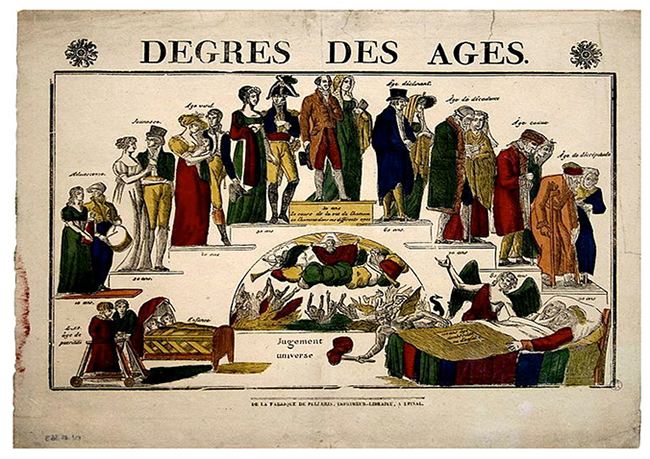
Figure 2. Source: Wikimedia Commons, the url August 27, 2015.
In narrative terms, we find that the theme of “youth” was exploited in the advertising discourse as the establishment of a desired state of the situation and therefore idealized. From the standpoint of the strategies of manipulation, the coveted position, over-determined by the modes of temptation or seduction. Axiologically it is contextualized by positive values and timely by an euphoric framework whose basis is not strictly micro, it makes it to focus exclusively on hiring action programs characteristic in terms of trade or consumption.
However, this problem has presented interesting heterogeneities of aspectual nature. (Greimas 1976: 40-42). This feature is important because it favors a conceptualization of the “youth” by advertisers as an idealized state of affairs, but also dynamic, procedural, over-determined by semas that gave it both a ‘duration’ as a ‘termination’ (‘conclusion’). As the combination of these semes in messages, by which the “female youth’ is understood both as a desired state of affairs” difficult and not ending’ (“young woman figure”) or one that lasts despite having already finished ‘(concept of “rejuvenated woman”). Behind this polarity there is a meta-category figuration subject of advertising – the “youth perpetuates” - whose value is deduced by the contrary (ie, by an opposed relationship) with another. “Youth ends” Its textual existence also was developed from a very typical configuration: the “aged woman”. Describe each of the categories included in the inventory
3.1.1. Figuration No 1: the “young woman”
This category is determined by the aspect sema ‘durability’ that overlaps with the “termination”.
The implied figuration corpus analysis of an adjacent temporary to a young female life style that is so recurrently extraordinary, in order to perpetuate, became a regular common: the great outdoor life, the romance, the adventure, irreverent, etc. (Figure 3).
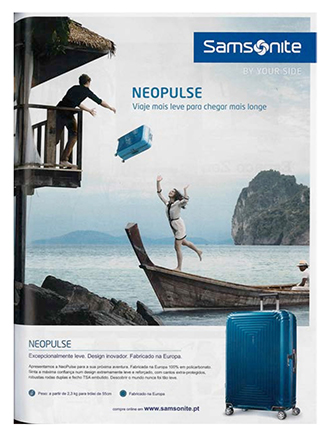
Figure 3. Source: Maxim Magazine, May 2015.
This figuration, the woman expresses fully and constantly her youth through figurations of young actors and women, exotic amazing and recurring scenarios.
It is noteworthy how the figurative schemes tend to be essentially of iconographic nature: predominating large and medium shots, with devaluation of the depth of field and some representations, the lighting standpoint, relatively overexposed in order to produce a bright, evanescent figuration (Figure 4). Youth is counted in present tense; one that is perpetuating now - the transcendent celebration of what does not end.
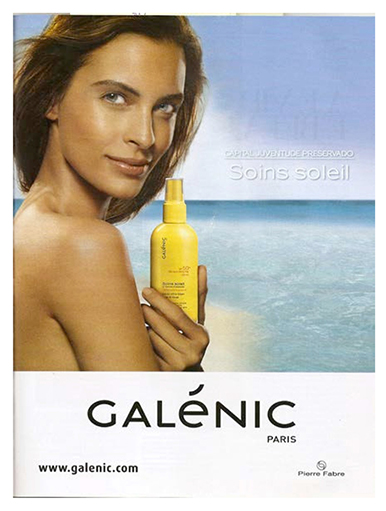
Figure 4. Source: Max Magazine, July 2015.
In this regime, the transcendentalism of the eternal feminine, being so repeatedly celebrated, becomes a kind of “ordinary temporality” as if the term did not finish, did not suffer the action of the sema ‘Termination’. This will not stop, however, the staging of “Discontinuities” that have established some kind of historicity, but with the condition of not to contradict. They correspond to the moments considered decisive in life cycle of the women: single times, as predicates “Tenderness” (Pandora) and the “emergence of the first rules’ (Lactycyd), that oppose the marriage (connoted as” unforgettable “- Morana Brides), the ‘Motherhood’ (“Time Love” - Tous, but also the requirements and the anxiety - Phytogold, notes force) and “menopause” (Femal). The figurative point of view, contrary to what happened with the meaning that the most transcendent temporality, which implied a recurring visual figuration, is essentially of verbal nature, where words objectified images (anchor function).
3.1.2. Figuration # 2: “The aged women”
For the former category (the “young woman”), we also present some interesting scenarios announcing the suspension, to put in brackets, in short, as if she refuses. We consider that to be consistent of the aspectual sema Intervention “Interruption” in the “duration”, resulting in an advertising discourse that established a “suspension” of the theme of “eternal youth”. It is as if the aspectual sema ‘durativity’ were suddenly affected by the ‘termination’ and ‘youth is perpetuated “meta-category ushered in the” final youth”, the eternal youth was denied by the report of a random incident made that the body of elderly woman. These are the scenarios that the surplus or neglect, which ideologically unveiled a moral (advertising), sleepless nights, lack of care with the sun on beach days, late night hours, little care diets, smoking recklessness. Interestingly, these events are supported by a verbal expression, as if there were not a ‘division of labor’ sign: in the iconographic background it remains the task of utopian meaning, idealized, youth and eternal femininity, so that a given figuration over the sema ‘Durativity’; the verbal signs, the intellectualization, the objectification of iconographic way through prescriptive and moralizing messages (anchor function). An expression governed by the sema ‘termination’. Thus, in terms of iconographic figuration, the representation of women still tend to be idealized, euphoric, with a perfect body, unmarked by these incidents, however, words are important for certain “life stories” of the dysphoric foundation: rings under the eyes of sleepless nights, irritation by the excesses in beach days, premature wrinkles, less firm skin of the first signs of old age or the birth of children. The eternal lies denied by the pace of life, of the event that puts you at risk. There is hope because the incident is easily outweighed by the product (Figure 5).
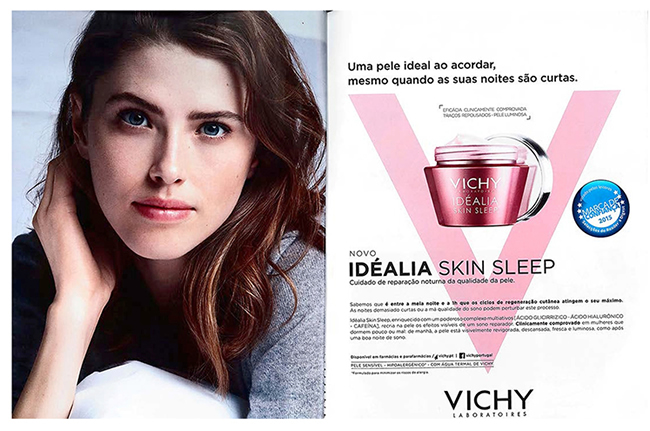
Figure 5. Source: Vogue Beauty Supplement, June 2015.
3.1.3. Figuration No 3: the “old woman”
This is a figurative category that is deduced from the first (that corresponds to “young woman”), and then tested empirically in terms of pregância textual.
To be affected by the sema ‘termination’, the states with a privileged category such situation of relationship (opposition), implying a figuration of “old age” (female). In our corpus of analysis, this category was noted for its rarity, allowing us to conclude that we are on the other, by, recurrence, they were the most widespread stereotypes by the advertising and the proposed registration of women’s magazines in the lesser reading audiences and the contracts for various products and brands. It is as if there were an expression system in which the elderly figuration stay refers to a “discursive taboo.”
3.1.3. Figuration No 4: the “rejuvenated woman”
The setting of the “young woman” is governed by the sema ‘duration’. By contrast, the “old woman” was determined by the ‘cessation’, which, however, shows significant variations. Therefore, the issue of aging women could be calculated as a permanent absence of the situation of youth in the state (an advanced age does not end, which is not reversible) or provisional (an old age that refuses because youth can always recover); a retirement that perpetuates - and for highlighting its ‘rarity’ expressive - and that is temporary, the prospect of being delayed or postponed.
If the figuration of “old woman” has become the corpus as a kind of “discursive taboo”, rarely on stage, but always present, however, the advertisement messages were recurring in which an adjacent figure out the meaning of his denial predominated. The woman is described as someone who, although she is no longer seems young she seems to be. Here, the basis of the representation of the “rejuvenated woman” (Figure 6).
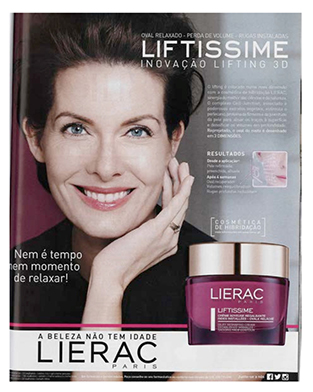
Figure 6. Source: Maxim Magazine, May 2015.
This regime of figuration of advertising is due to an act in the extension of youth which is governed by a framework of the euphoria scam of the end to wait or hope. Pathemic this dichotomy is important for positioning the support of some products. This is the case of therapy or cosmetics. In the first, aging was carried out as a situation of non-final state: a “pathology cure” - not rigid, as it can be inverted and that generate under expected conditions a state (standby mode). Here are the products inserted in narrative programs of inversión of time, the “war” against old age “, framed within a context that is pathemic. The typical (Bio Oil: “Is it what it promises”) was expected. We illustrate our reasoning with a reminder of the patent in Figure 7, which, however, does not include the analysis of corpus.
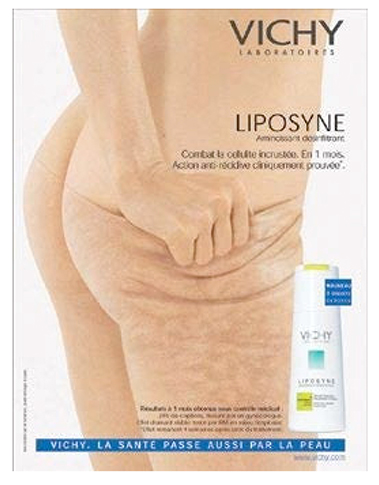
Figure 7. Source: Le book. Url the August 25, 2015 http://www.lebook.com/lacreative/creative/vichy-liposyneadvertising-2004
By contrast, cosmetics, aging is staged as a definitive state of affairs that the sema “duration” stated at the ‘termination’ (old age cannot be a regression). However, contrary to what happened in the aging figuration, it is understood as a situation of state to prevent (and therefore ‘abject’), advertising to conceive the irreversibility of aging as an opportunity to market through products which camouflage - Cosmetics. The products tend to be designed as resources intended to hide regarding what is inevitable through a “pseudo-reversion” (a form of “denial is strictly virtual”) which facilitates its embodiment, a pathemic situation and not of waiting but of hope, belief, confidence, ultimately, faith. This context will contribute to the importance of the property as if they were “magical objects” miracle supports that allow to securly rejuvenate the transformation of the female body as a chrysalis (Figure 8) Vichy - “pleasure and nutrition, an elixir and a balm in a relaxing ritual.”
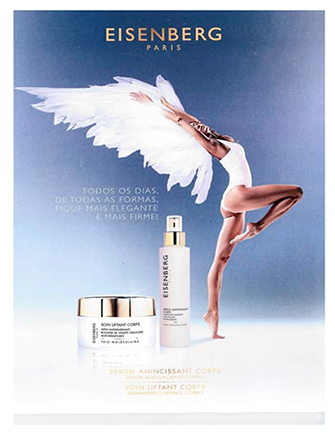
Figure 8. Source: Vogue Magazine, June 2015.
In the Table 1, these four ranges of significance of young women are systematized. We emphasize that the content of the substances are constituted, in discursive terms, in actorial functions (i.e., thinking about different schemes of subjects of advertising: the young, the young woman, elderly woman or female of age).
Table nº 1
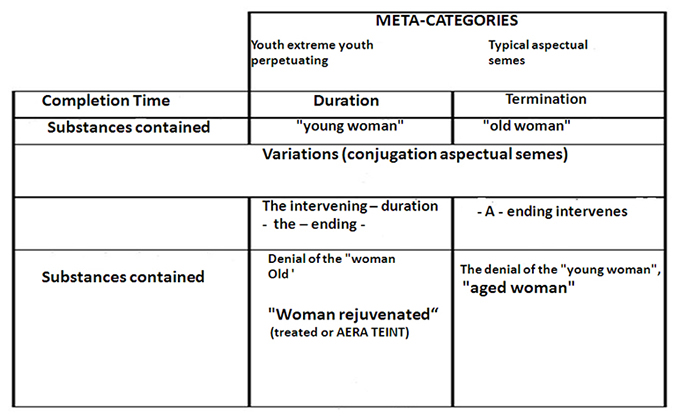
“Youth perpetuated” against the “youth termination” are target terms (Story, 2011: 13) that systematize complementary thematic settings and derived from the intervention of aspectual typical semes (duration vs. termination) or its distinctive blend (‘Duration’ intervenes in the ‘cessation’ vs ‘termination’ involved in “time”).
In Scheme 1, these configuration categories were systematized.
Theme. Scheme 1
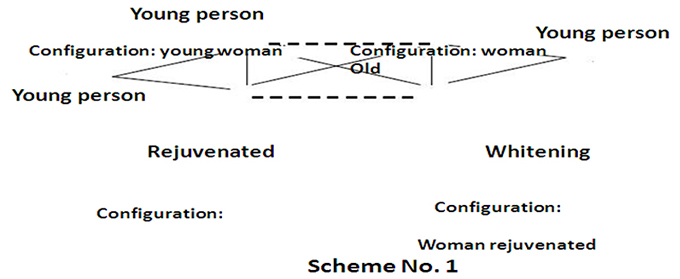
3.2. The results of expressiveness plans
As part of the usual verdict advertising regimes - of which the advertising text it manages and generates a trade to make believe - and are linked to the publication (it seems) or show (does not seem to be) - each category. However, the inventory is associated to the meaning of dynamic and expressive specificities. We come to break down there, except in the “old” whose state has been significant is the latency.
3.2.1. The “young woman”: the predominance of visual
It is this regime that decides, in a more or less logotécnico way, an idealized version of women. It is interesting that the expressive point of view, is quite laconic. The significance was conducted on the composition of the images than words. They were characterized by static representations spaced distant poses sometimes composed (three quarter parts or profiles), especially in color, with a predominance of large and medium planes and schemes of overexposed lighting. The manifestation of ‘being young’ next to a “real” femininity supported by a static distant expression, with a composition intended to be transcendent, idealized, typical of the preaching of the objects of of the modes of desire and of manipulation introduced in the field enticing (Figure 9).
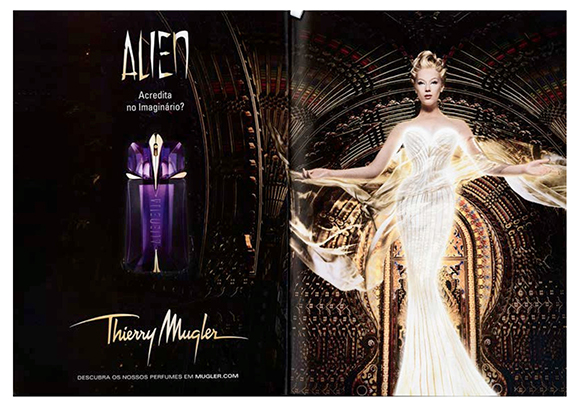
Figure 9. Source: Maxim Magazine, May 2015.
3.2.2. The “rejuvenated woman”: the prevalence of visual and play
The configuration of the rejuvenated woman was quantitatively much of the corpus of analysis. As mentioned before, the advertising discourse denies old age in different ways of discursive management of their configurative marks, particularly through the cover (cosmetics) or therapeutic (repair).
The disguise of old age marks also implied a figuration of iconographic advertising associated predominantly with the positioning of the products as “cloaking devices”. This figurative framework fulfilled supplemented by a significant recurrence that was related to visibility. These are the scenarios of light, brightness, color, and contour (Figure 10).

Figure 10. Source (left to right): Active Magazine, May 2015. The Vogue, June 2015. Magazine.
The texts are illuminating this tendency to “visuality”, “skin of healthy and radiant appearance, the inside to the outside” - Shiseido; (...) “The result of a single color, customized by her hairdresser in the light, even darker brown. Inoa visibly improves the quality of your hair” - Loreal; “The skin becomes instantly that reveals a firmer appearance, uniformly carved and bright” - Estee Lauder; “Regardless of your age or skin tone, Mission Perfection serim, corrects standardizes brightens the skin without altering the natural tone” - Clarins “(italics are ours).
In addition to this regime appearance of aging mark, which was conceived as “pathological symptoms”. More than a cosmetic, the product is positioned with a therapeutic resource, which means that old age is staged as a situation of state to overcome, for the treatment, for “repair” by transmutation of a ritual wrinkled body into a rejuvenated one, however ‘smoothed’, spinning full. The verdict previous regime ‘seem to be’, attached to the meaning of “old age” that is intended to disguise, now gives way to a relative ‘(re) appear to be’ reporting to the “Rejuvenation”. This discursive manifestation figurations will be ensured by predominantly tactile meanings: “Every day, in every way, to be smarter and stronger,” Cell-binding complex (...) gives firmness and gives youthful skin to soften the lines in the surface and densify depth volumes - Lierarc. This tactile terminology is also combined with a production of the sagging, weight and volume of skin roughness showing cellulitis, sometimes supplemented with interesting graphics files such as the use of heterogeneities in the quality of the paper of the pages - slightly more cardboard and soft. Under this scenario, the tactility also highlights the existence of product images of demonstrative action on the “depth” of the skin (Figure 11).
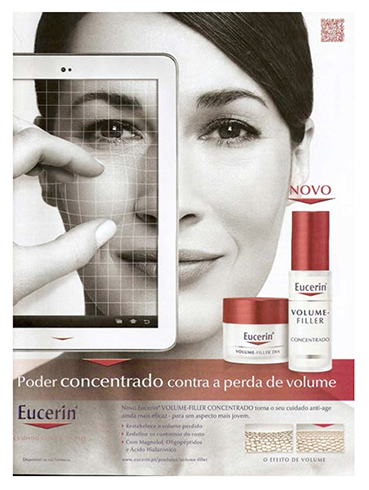
Figure 11. Source: Vogue Magazine, June 2015.
In short, it is uby virtue of a figurative isotopy ‘touch’ next to a theme about the reversibility of old age and specific regime verdicts of it (re) seems that some products are positioned as “medicine”.
3.2.3. The ‘old woman’: the predominance of verbal
Previously he mentioned: the figurative category was characterized by a significant dichotomy. On the one hand, images, important utopian directions, in relation to an idealized young woman, with the same expressive specificity of the category of “young woman”. However, the effect of aging is derived from an verbal expression adjacent to a meaning that was not present in other inventory categories: regarding the passing of time. Therefore, this category figurative created an account, the account of the incident (and repair) and that is simply a consequence of the action of the aspect sema ‘termination’ in the ‘duration’. The static sense of the images is countered by dynamic meanings conveyed by the words that always generate several stories always starred by antiheroes - misfortunes of actors helped by adjuvants. These are just parts representative of own brands, constantly provided with infallible / miraculous instruments (Products): Vichy Idealia to “awaken an ideal skin, even when the nights are short” (cf. again figure # 5); Kérastase, “give your hair a second life Resistance Thérapiste The program first fiber animator for badly damaged hair and subjected to too many chemical processes..”; Pantene “anti-oxidant new technology” to protect hair from too frequent washing (Figure 12).
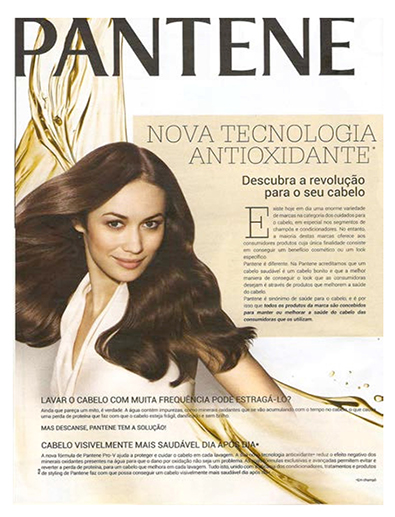
Figure 12. Source: Maxim Magazine, June 2015.
Rethinking the scheme # 1 in the semiotic square of advertising thinking that it was possible to discover an interesting dichotomy that is significant about the existence of dispar narrative programs and underlies how products and brands position themselves by advertising. This dichotomy refers to the polarity of the main narrative programs, referring to products that are intended (i.e., stand / notorious) as mere ‘Props’, and secondary programs in which they are as “instruments”.
Underlying the axis of the “Youth” vs “old age” we realize the existence of the main narrative programs, from a strategic point of view, aimed at stimulating action programs of relative statements concerning (public) at will (in terms of meanings as objects of desire or temptations) or duty (referring to abject - unwanted situations of state by advertisers and relative to competing products that means something to avoid). This feature is interesting: the enunciation of these speeches assumed a competent hearer, i.e. someone with the modal values of power and know-how. Someone with performative competition, that wants to keep his youth, that wants to avoid old age (and competitive products ...). In this perspective, the advertising discourse focused on stimulating their whims, deceiving their wishes, desires and also the fear of what does not interest to him. It is this correlation between what the individual wants and the offers that established a better youth stereotype of communication link and with the support by gender in reading contracts and through management agreements introduced in the field of temptation advertising.
Unlike what happened in the axis of the “Youth” vs “old age” in the ‘Rejuvenation’ vs publicity register ‘Aging’ is responsible for transmitting the modal power values and know-how now enrolled in secondary narrative programs considered key in acquiring skills. They are fundamental to the operation of the main narrative programs (which a desire or need to do is found). In these programs, the products are positioned as key tools with which to acquire the subject matters, power or skills, enabling them to access the values (or avoid negative values) associated with objects of desire (or the abject).
The axis ‘rejuvenation’ vs ‘Aging’ presupposes a conceptualization of an expository as an incompetent subject. However they covet access to the supreme values of youth and femininity, the reader of women’s magazines and target audience of these ads is evoked as active subject, it lacks the requirements for it to play a major successful narrative journey. This context was to favor the positioning of the products as “tools” to ensure the power to do – the access to a coveted young and femininity - and the brand as adjuvants entities capable of communicating knowledge in the context of narrative programs of the skills they acquire. Since modal values of a virtualized competition (associated with the determination and the duty to do so) are no longer in the game, then the speech becomes highly preceptive. There was the fact that such appeals precepts justified in conjunction with the transmission of information on the formation of a power and know-how (Pantene “Discover New Antioxidant Revolution technology for hair.” - Italics added). Advertising figurations also varied. - In this regime, inaccessible and important difference models and scenarios are no longer met, but prescribers, the hosts, the demonstrators. Actresses who starred in the roles of advertising ‘educators’ (Figure 13)
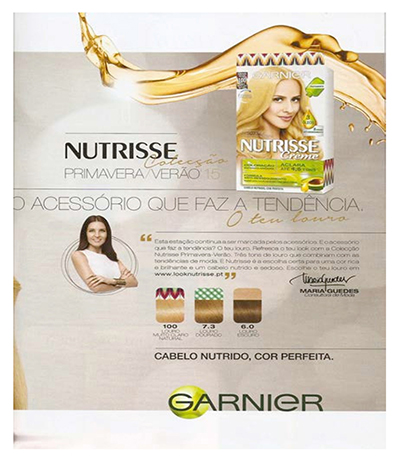
Figure 13. (details) Source: Active Magazine, May 2015.
Furthermore, as recorded the advertising discourse, a derivation of the objects of desire for the subject to himself in them can / will know how to play a performance, then the arrangements for handling were also carried over into seduction.
Advertising seduction reports an appreciation of the performative ethos of the subject to which it is directed for the handling process. It is in this strategic context that is part of an underlying discourse of “rejuvenation”; a speech focused on consumer needs in, who knows what he does not want, but remains powerless or unaware about how to avoid it. Sometimes this seduction is explicit (“Today I feel safe, light (always) and my skin” - Vichy Laboratoires); other, more subtle, to find implicit its own idealization of the Ad magazine reader. When the belts brand Janira Secrets revealed that the “chain effect” is reduced to a size, which is a part” that the brand does not do because of its sensitive tissue and finish without fringes “implies the existence of a reader, although an “extra size” (therefore no power skills and know-how”), was an interested person who wanted to know more.
3.4. The results for the value framework
In addition to the dichotomy in relation to the situation of narrative programs (primary vs secondary nature), youth and femininity advertising adjustments are also based on disparate axiological structures. Some are consistent with those already systematized by Jean Marie Floch for his research on advertising campaigns of Habitat (Floch, 1995: 145-179).
From the moment that we revealed the body of a recurrence analysis management strategies that inform the narrative programs of primary or secondary category, it was also possible to evaluate the occurrence of two main axiological groups: those related to the basic values and in relation to the use values.
The basic values are existential, fundamental type: in the case of our corpus analysis, are adjacent to prescription regimens (what to do) or prohibition (not to do). Therefore, it is an axiological positive frame / negative and - euphoric / dysphoric scam - that is based on advertising figurations counter on the sense of informing coveted situations status or repudiated lists and proposals (therefore) negotiated with the statement under contracts reading.
In turn, use values were also next to prescriptive or prohibitive regimes, as they were characterized by a negative or positive axiology and frame scam also euphoric or dysphoric. The difference from the other consisted simply underlying secondary narrative programs that are. The values ?that focus on the fundamental state of the objects, giving it a characteristic, or the subjects themselves, under the mobilization of their powers.
Through the projection of these two axiological categories in the semiotic square we have identified four types of recovery we call “utopian” “dystopian”, “renewal” and “recovery” (Scheme 2).
The utopian / dystopian appreciation integrated into the basic axiology. It refers to a fundamental and existential domain next to the objects or the abject per se. It is the underlying figurative opposition of ‘young woman’ vs. the ‘old’. In one case, the figuration is always represented as desirable, on the other, one that is implied - introduced in the field of latency and interdiction and meaning as a situation of state to avoid.
The figuration of “rejuvenated woman” was based on a certain axiological renewal for a logical calculation - regarding best options for state situations where the aspectual sema “duration” spoke about the “termination”. Old age is the revised proposal as a status which can be reversed or suspended. Here the instrumental positioning products such as “drugs,” the rescue that allows lost youth or the meanings as “cosmetic” destined to conceal old age. This assessment has been distinguished, in turn, in another with an instrumental axiology, that we have called the “recovery of values’- which reported the role play of combat power to aging neglected – a meaning respectively determined by the intervention aspectual sema “termination” of the “duration”. We refer in particular to the random configuration of aging women, in which the products were intended as recovery tools that allow the repair of any permanent damage, the overcoming of specific incidents – those that never question the management of a femininity that an idealist wants to be always young.
5. CONCLUSIONS
Before testing hypotheses, responding to the initial question about how the actor promoted in ads in magazines for women is calculated, especially the stars in the roles of “young woman”.
From a quantitative point of view, it is remarkable the frequency of the figuration. It was established as the main communication system of advertising broadcast by the magazines for the female audience in Portugal in 2015 and it was from there that two others whose value is also recorded are of contradictory nature (the “middle-aged woman” inscribed in the issue of aging) or supplement (the “rejuvenated woman”). The opposite figuration, “old woman” did not meet a discourse (in terms of statistical significance, three properties in a sample population of 230), which did not prevented from presenting a dormant state inserted in the field of the implied.
In addition to the frequency of the figuration of the “young woman”, it should also be noted that in relation to the “rejuvenated woman” that the meaning was behind the “oldness of denial.” This correlation is embodied in an interesting addition in terms of expressive figuration. In the topics of ‘young woman’, the language of advertising is mainly installed in view of the regime, while in the “rejuvenated woman” this also carried out a census, but supplemented by another, which reports a kind of tactile apprehension. Hence the recurrence of a figurative isotopy related to the recurrence of weight of the staging, the relief, the volume.
The correlation “young woman” / “rejuvenated woman” associated with the complementarity ‘youth’ / ‘rejuvenation’ also found in the verdict regimes of advertising discourse, specifically two basic stereotypes: that of a young female of real meaning (it seems to be) and that of arelative to one that is “(re) produced,” the prospect of a recovery of youth (‘re –Opinion to be “) or a” staging”of its existence from the disguise, a camouflage that only a cosmetic can ensure (does not seem to be). This complementary relationship was also felt in the specificity of the narrative programs. The importance of “Youth” is recorded in idealized, utopian or, if you like values, adjacent Basic narrative main programs . They are those in which people establish a relationship together with the orders of supreme values and objects (in importance) and therefore coveted. They are related to gender and age of identity, meaning in the advertising text and transmitted by female magazines as desirable (“being a woman is to be young”). On the contrary, the meaning of “rejuvenation”, met with secondary narrative programs instrumental through which individuals acquire skills to successfully key staged. They are outreach programs of rapprochement to an imagery and age of the idealized woman by advertisers and magazines for women, whereby goods are regeneration products or cosmetics, are positioned / connoted in a passionate context that more than being of waiting (standby) it is also hopeful about a reversal of biological time or at least a masking action. We observed from the point of view of discursive recurrence, that is, from the number of cross transmitting messages to many different products and brands, the figuration of roles and young women is mainly focused around these configurative fields, “young woman” and “rejuvenated woman.”
We are going to test hypotheses
The first is the fact that the “female youth ‘is a redundant configuration and recurring issue that cuts across the different brands and products or specific ones, partially confirmed. In fact, we saw a repeat of such importance, as if presenting one (and exhausting) cross state. The youth and womanhood are recurrent themes in the advertising speech published in women’s magazines. On the contrary, we cannot confirm the recurrence of such importance focused on certain brands or products in particular, as if they were young and women goods’”. This impossibility resulted from the fact that the underlying time period of the corpus of analysis have been too short to assess the specificity of the meanings underlying the strategies of brands.
The second hypothesis of the existence of variations around the figuration “female youth’. About this configuration, ubiquitous in the corpus of analysis, marked the beginning of its relationship with others, also endowed with a strong discursive presence: the “rejuvenated woman” conceived as a denial of ageing. It was around this combination of semantic complementarities that articulates much of this advertising speeches.
The third hypothesis, on the possibility of young figuration woman articulated differently by reference to the frameworks of meaning advertising, is confirmed. It is true that the fundamental meaning of the “Youth Women’ recorded a transversal value to the most varied advertising frames (products, people, welfare scenarios). We noticed, however, that the ratio of conformational complementarity “young woman” / “rejuvenated woman”, also released on the same joint framework of people with products. The setting of “rejuvenated woman” inserted mainly in the products. Through her body, it becomes visible / materializes / customize / shows performing skills (instrumental) of certain goods, such as cosmetics or repairers producers. In contrast, the figurative reference to “young woman” is predominantly inserted into the framework of the people, to decide on strategies for creating and managing images of utopian nature of brands that are not necessarily the cosmetics and beauty products. In our opinion, this trend can report a significant regime of metonymic character in which the female figuration is assumed as a stereotyped and idealized representation of the audience of one (the readers) and their target markets (the consumer).
The fourth hypothesis, referring to the fact that the thematic figuration of update of female youth or propose other female stereotypes by reference to reading contracts, was partially confirmed. In fact, advertising stereotypes updates, but does not propose an alternative. Check yourself in this sense, how in depth the same time complementary themes (‘youth’ vs ‘rejuvenation’) in combination with a latent moralism associated with the issue of “aging”. So it was found that the repetition of a female figuration in which we discover a recurring theme of the “suspension” means that women are systematically “frozen” in the time of youth. It is closed in the dome of a lifestyle that is not surprising since it was so organized several times it stopped to be extraordinary, so it becomes commonplace ritualized. Pragnanz this problem is even more evident when supplemented with other semantic universe stigmatized in the realm of latency and managed discursively as a taboo: “old age”. This absence seemed as obvious as the establishment of the “old” and the theme of “old age” kept in the register of advertising, but it was actually just a symbolic reality discursive in terms of advertising. In this sense, advertising contributes to update stereotypes related to the association between age and gender. It’s like the world that offers advertising in magazines of Portuguese women in the summer of 2015 there was rarely room for the elderly. Women always want to be new or at least rejuvenated.
REFERENCES
1. Barros DPL (2004). Publicidade e Figurativização. Alfa, 47(2):11-31.
2. Camilo E. Homo Consumptor. Dimensões teóricas da comunicação publicitária. Covilhã, Universidade da Beira Interior/LABCOM, 2010. versão pdf: http://www.livroslabcom.ubi.pt/pdfs/camilo-consumptor-2010.pdf
3. Charadeau P (1983). Langage et disciours. Élements de sémiolinguistique (Théorie et pratique). Paris: Hachette.
4. Floch JM (1990). Semiotique, Marketing et Communication. Sous les Signes, les Strategies. Paris: Puf.
5. Floch JM (1995). Identités Visuelles. Paris: Puf.
6. Goffman E (1979). Gender Advertisements. New York: Harper& Row, Publishers.
7. Greimas A, Courtés P (1993). Sémiotique. Dictionnaire raisonnés de la théorie du langage. Paris: Hachette.
8. Greimas A (1993) La semiótica del texto. Ejercicios prácticos. Barcelona: Paidós.
9. Images of women in advertising. Recuperado de http://www.cabrillo.edu/~mmoore/imageswomen.html
10. Klein N (2002). No Logo. O Poder das Marcas. Lisboa: Relógio D’Água Editores.
11. Le Book. Recuperado de http://www.lebook.com/lacreative/creative/vichy-liposyne-advertising-2004
12. Leiss W, Kline S, Jhally S (1998). Social Communication in Advertising. Products & Images of Well Being. Ontário: Nelson Canada.
13. Marillonnet J (2014). Images de mode et images de femmes dans la pressemagazine feminine française. Parades normatives noumascarade stratégique?. Esscahes. Journal for Communication studies, vol. 7 n. 2, pp. 133-143.
14. Morris D (1998). Os sexos humanos. Uma história natural do homem e da mulher. Lisboa: Terramar.
15. Mota-Ribeiro S (2005). Retratos de Mulher. Porto: Campo de Letras.
16. Péninou G (1976). Semiótica de la Publicidad. Barcelona: Editorial Gustavo Gili
17. Semprini A (1995). El marketing de la marca. Barcelona: Paidós.
18. Semprini A (1996). Analyser la communication. Comment analyser les images, les medias, la publicité. Paris: L’Harmattan.
19. Sanchez CL (1997). Semiótica de la publicidad. Madrid: Sintesis.
20. Véron E. L´analyse du contract de lecture: une nouvelle méthode pour les études de positionnement des supports de presse. En: Institut de recherches et d’études publicitaires (Dir.) Les médias, experiences, recherches actruelles, applications (pp. 203-229.)
Corpus de análise
Revista Activa, Portugal, Maio, Junho, Julho, (294, 295, 296).
Revista Cosmopolitan. Portugal, Maio, Junho, Julho, (277, 278,279).
Revista Cristina. Portugal, Maio, Junho, Julho (3,4,5).
Revista Elle. Portugal, Maio, Junho, Julho, (320, 321,322).
Revista Lux woman. Portugal, Maio, Junho, Julho, (170, 171, 172).
Revista Máxima. Portugal, Maio, Junho, Julho, (320, 321, 322).
Revista Vogue. Portugal, Maio, Junho, Julho, (151, 152, 153).